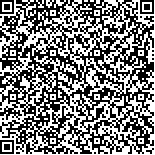下载中心
优秀审稿专家
优秀论文
相关链接
摘要

时间序列遥感影像常用于地表覆盖监测及其变化监测.然而,利用时序遥感数据—尤其是中分辨率遥感数据监测地表覆盖变化,其方法基本是先对多期影像分别进行监督分类然后对比分类结果.由于这种方法需要对每期遥感影像单独选择分类训练样本,而对于历史影像,常常难以获得可靠的样本数据.本文基于遥感数据定量化处理,尝试利用光谱特征扩展方法对时间序列Landsat数据进行分类:首先,结合一种新的大气校正方法和相对辐射归一化方法,对时间序列Landsat数据进行定量化处理,以消除各期影像之间的辐射差异,获得地表反射率数据.然后,论文选择一期易于获得分类训练样本的反射率数据作为“参考影像”,并结合样本数据提取不同地表覆盖类型的光谱特征.最后,将“参考影像”中提取的地物光谱特征,扩展到所有时间序列反射率数据进行分类.论文利用青藏高原玛多地区的5景Landsat数据对本文的方法进行了验证,结果显示:基于光谱特征扩展的分类方法,可有效对定量化处理后的Landsat数据进行分类,分类总体精度为88.35%—94.25%,分类结果和传统的单景监督分类结果具有较好的一致性.此外,研究也发现,“参考影像”和待分类图像获取时间的季相差异会影响其分类的精度.
Time-series remote sensing images were previously employed to detect land use and land-cover changes and to analyze related trends. However, land-cover change mapping using time-series remote sensing data, especially medium-resolution imagery, was often constrained by a lack of high-quality training and validation data, especially for historical satellite images. In this study, we tested and evaluated a generalized classifier for time series Landsat Thematic Mapper (TM) imagery based on spectral signature extension. First, a new atmospheric correction procedure and a robust relative normalization method were performed on time-series images to eliminate the radiometric differences between them and to retrieve the surface reflectance. Second, we selected one surface reflectance image from the time series as a source image based on the availability of reliable ground truth data. The spectral signature was then extracted from the training data and the source image. Third, the spectral signature was extended to all the corrected time-series images to build a generalized classifier. This method was tested on a time series consisting of five Landsat TM images of the Tibetan Plateau, and the results showed that the corrected time-series images could be classified effectively from the reference image using the generalized classifier. The overall accuracy achieved was between 88.35% and 94.25%, which is comparable with the results obtained using traditional scene-by-scene supervised classification. Results also showed that the performance of the extension method was affected by the difference in acquisition times of the source image and target image.

